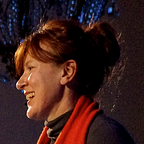Far Above Cayuga’s Waters
Working with Cornell Alumni Affairs and Development
Cornell University is a special place. Initially funded by Ezra Cornell’s Western Union fortune and founded in 1865 on a land grant from New York state, from the beginning Cornell has been a visionary institution open to anyone of any religion or race (willing to brave the winter weather of the Finger Lakes region). The first woman was admitted in 1870, far ahead of most other universities of that vintage.
Toni Morrison, Bill Nye, and the Notorious RGB are just a few of the quarter-million Cornellians living around the world. (Andy Bernard from The Office, being fictional, is behind on his class dues.)
Long-established universities have well-established practices for maintaining relationships with their alumni and wider communities. These practices are rooted in direct mail and real-world relationships, and remain quite successful for fundraising.
Yet, as these institutions talk about cultivating people who change the world, the world is changing. Approaches to communication need to keep pace with those changes and look beyond the horizon of what works right now. The future is digital. Demands for attention are greater. Conversations are replacing publications.
Mule Design partnered with Cornell Alumni Affairs and Development to envision and create a platform with an eye towards the future, supporting new ways of speaking to an increasingly diverse community.
As someone I met way back when I was applying to college said to me, students are students for only a few years, but they will be alumni for decades. While this relationship is different for every school and individual, there are often missed opportunities for mutual benefit.
From the alumni perspective, this relationship can feel reduced to a lifetime stream of requests. Most universities ask for donations on the regular, but don’t do a great job of explaining what benefits they offer in return. We wanted to change this, and set the stage for a better exchange of value. Technology, used judiciously, can enhance a sense of service and support deeper relationships at a larger scale.
After interviewing a wide swath of staff, alumni, and community members, we understood that the meaning and value of being an alum typically changes over time with one’s stage in life, and that these life stages don’t correspond tidily with a class year. It was important to reflect the increasing diversity of the alumni and the increasing complexity of life.
Because of this diversity of audience needs to meet, we discussed the potential for personalization. However, truly personalizing an online experience comes at a great cost in terms of programmatic logic and content creation. The complexity of the system would rapidly outstrip its utility. Our goal was to find efficiencies to make the caring, committed staff even more effective, not to create new kinds of work with little payoff.
Few people visit their former university’s website unbidden. Email campaigns and social media remain significant drivers of traffic. So, it’s much simpler and more effective to create a fairly stable, contextually linked website and use other communication channels to frame and curate content in a more customized way. This permits a high degree of targeting with relatively low effort.
This strategy also better accommodates the sprawling Cornell ecosystem. Alumni clubs, special programs, events, and volunteer initiatives use a variety of communication platforms and media that have grown over the years. We sought to welcome them onto the platform without requiring a huge, unnecessary migration.
We envisioned the site as a concierge, helping guide every visitor from what they need to what Cornell offers. This could be social events in an unfamiliar city, opportunities to sharpen skills through service, a connection to a community of strong shared values, or simply a stroll down memory lane.
The structure of the new website reflects the basic audience intentions we found: understanding alumni life, revisiting campus, connecting with others, volunteering, participating in enriching programs, or finding events that match one’s location and specific interests. We strove to make everything simple, clear, and benefit-oriented.
Fundraising is an important business goal. We created the space to make the case for giving to Cornell—not only out of gratitude and warm feelings—but in support of the ongoing, and forward-thinking—work the university does in the public interest. However you want to help make the world a better place, we suspect there is a program at Cornell worth supporting: medical research, labor issues, the environment, food security, or just better hospitality. It’s a matter of letting people know, and letting people know that they are part of a community of people committed to an ethos of giving back. The site supports a wide variety of giving stories allowing AAD to share the meaning behind the gift, big or small.
In order to enhance collaboration among the various parts of the Communications team, we punctuated our design work with a workshop to encourage more conversational writing and goal-directed storytelling. A new system demands new standards, and it’s important for everyone participating to contribute to their creation and embrace them.
While, sadly, our work with the Cornell team (and our fantastic WordPress partner Reaktiv Studios) is done, their adventure is just beginning. As they continue to learn about their audiences, the underlying structure allows growth and change within a set of guiding principles. Like watching a new graduate enter the world, we’re excited to see their big red path unfold.
Originally published at muledesign.com.
